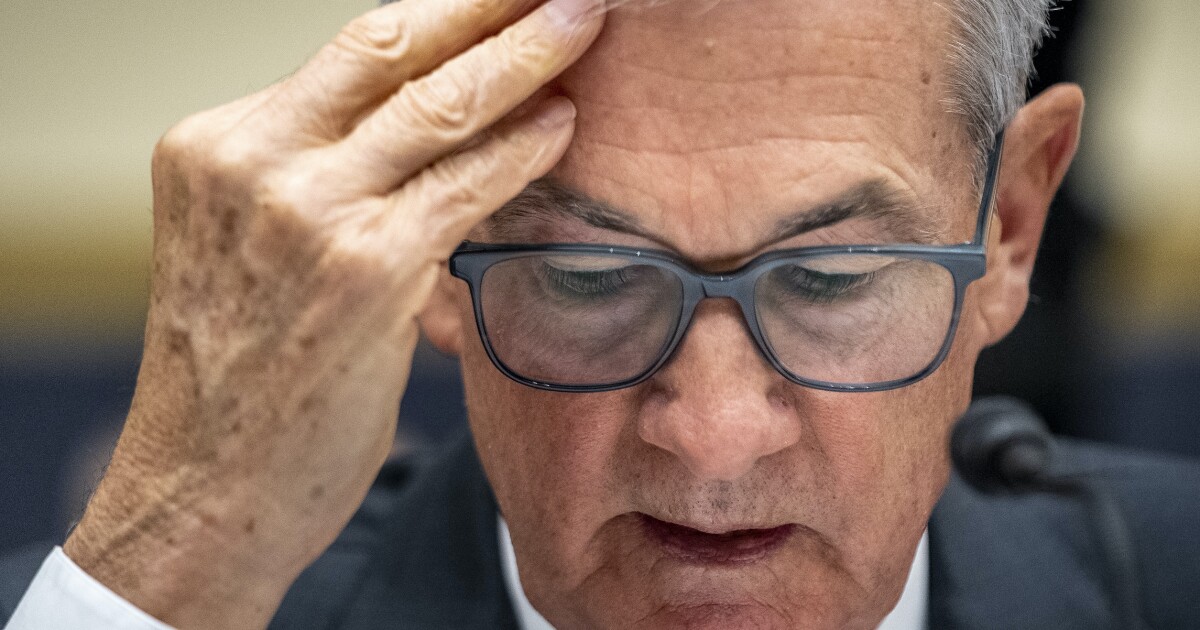

In the spirit of the season, the Washington Examiner has identified 12 issues we believe will shape 2024 — and beyond. These close-up examinations of agenda-setting issues cover everything from the ongoing battle between the Biden family’s business deals and Republican Oversight, the emergence of a “new world order,” and fights over redistricting and new election maps. Part eight is about whether there might be a recession in 2024, a critical election year.
The United States avoided a recession in 2023, but the economy is still not out of the woods heading into a 2024 filled with uncertainties.
The Federal Reserve has raised interest rates to highs not seen since before the Great Recession. The Fed’s current rate target is 5.25% to 5.50%, a level designed to tamp down demand and thus inflation. Historically, though, rate-hiking cycles raise the risk of an economic downturn.
TWELVE DAYS OF WEX-MAS: DEMOCRATS REBRANDING CANDIDATES AS TOUGH ON CRIME AHEAD OF 2024 RACE
As the calendar flipped from 2022 to 2023, a large number of economists predicted that the U.S. would already be in the throes of a recession by now, but economic growth has instead continued at a robust clip.
As a rule of thumb, recessions are typically, though not always, marked by two consecutive quarters of negative gross domestic product growth.
Gross domestic product expanded at a 4.9% seasonally adjusted annual rate in the third quarter of 2023 — the strongest growth since the country’s pandemic rebound. GDP growth was 2.1% in the second quarter and 2.2% in the first quarter of last year. The Atlanta Fed’s “GDP Now” tracker predicts that GDP growth in the final quarter will be 2.3%.
But there is still much uncertainty for what lies ahead in 2024.
While the Fed has raised interest rates to high levels, it takes time for those rate hikes to filter through to the general economy. The majority of economists predict that some of that downward pressure will dampen economic growth heading into the new year and could even be enough to tip the U.S. into a recession, although most of those forecasting a recession expect it to be a mild one.
In a recent report, Wells Fargo economists point out that the Leading Economic Index, tracked in concert with the Conference Board, has declined for 20 consecutive months — a pattern that would indicate that a recession is imminent.
The economists note that the “historically reliable” indicator has been flashing a recession warning for some time.
“Yet despite the persistent warning signs from the LEI, economic growth has continued to strengthen,” the report reads. “The question as we turn to 2024 is will this period be classified as one in which the LEI cried wolf, or will we look back and cheer its steadfast signal at a time when broader economic conditions showed resiliency?”
Of note, the Fed is likely to begin cutting rates next year as inflation continues to meaningfully fall. Central bank officials are penciling in three rate cuts in 2024, although investors expect double the number of cuts.
Investors now see a nearly 83% probability that the Fed will cut rates in or before March, according to the CME Group’s FedWatch tool, which calculates the probability using futures contract prices for rates in the short-term market targeted by the Fed.
Investors are also pegging near-certain odds that the Fed will trim at least a full percentage point off of its target rate, with a high probability of even deeper cuts.
More rate cuts would bode well for the markets, although, perhaps the biggest uncertainty is whether inflation, which has been trending down, unexpectedly rises again, forcing the Fed to hold rates higher for longer. That would not bode well for a soft landing.
Rodney Lake, vice dean for undergraduate programs at George Washington University and director of the university’s Investment Institute, told the Washington Examiner that he is in the soft-landing camp.
“I think there is likely to be a very soft landing and potential mild recession, but all economic indicators look very positive as far as unemployment, inflation easing, and companies’ overall fundamentals looking good,” Lake said.
And the labor market has remained strong despite the rate hikes, which began in earnest back in March 2022. The economy broke expectations again in November and added nearly 200,000 jobs. The unemployment rate also dropped slightly to 3.7%, right around where it was in the months before the pandemic.
A recession, meaning a downturn in output that also drives up unemployment, would be a major problem for President Joe Biden’s reelection efforts.
Biden has been getting very low marks on his handling of the economy, likely due in big part to the inflationary scourge that has torn through the country. While inflation has moderated, people are still paying much more for goods than they were when he took office.
Inflation has overshadowed the strong job market, but if there is a recession and people start ending up out of work, it would only increase the magnitude of voters’ anger over how the administration is handling the economy. The Republican nominee for president would invariably use a recession as a cudgel to attack Biden as the year inches closer to Election Day.
CLICK HERE TO READ MORE FROM THE WASHINGTON EXAMINER
Still, as inflation keeps falling and with the expectation of interest rate cuts, more and more economists are expressing optimism that a recession can be avoided.
“High interest rates will remain a drag on consumer spending growth in the near term, although that drag has lessened somewhat as long-term rates have moved lower toward the end of 2023,” PNC chief economist Gus Faucher said. “Another constraint on spending growth will be the need for households to increase their saving. But overall, it looks like the U.S. economy is moving toward slower growth, but no recession, in 2024.”





